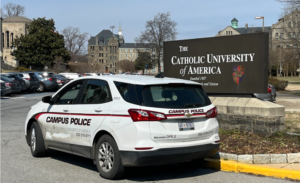President Trump’s Response to COVID-19

Courtesy of USA Today
By Chris Carey
The virus came to the United States in a slow crawl. It was China’s problem. As the death toll rose in China and skyrocketed in Italy, the calm and unworried response from the Oval Office was deafening. Slowly, healthcare authorities, government officials, pundits, and citizens came to the conclusion that the United States may be next. Here’s how the Trump administration has handled the outbreak in the United States over the last few weeks:
On January 3, 2020, the CDC received its first notice of the Wuhan, China outbreak of the severe acute respiratory syndrome coronavirus 2, the virus behind the COVID-19 coronavirus disease as named by the World Health Organization. This January 3 date was confirmed at a March 20 press conference of the Coronavirus Task Force by Health and Human Services Secretary Alex Azar.
Although the administration was privy to information regarding the growing threat the virus caused, information on China’s attempts to cover up the virus’ true effect, and on the real possibility of a pandemic, seven or more times since January President Trump claimed the virus is decreasing in its threat or that the threat is contained, according to the Washington Post.
Nevertheless, the president and his White House Coronavirus Task Force, formed on January 29, have done much in recent weeks to help brace the country for the inevitable influx of cases and deaths as warned by prominent health officials both inside and outside of the administration.
On January 31, President Trump imposed a travel ban on non-U.S. citizens who had been in China in the prior fourteen days; however, this did not include close relatives of U.S. citizens. The loopholes to these travel bans resulted in continued air travel from China and Italy into the U.S. as late as March 21 where two Italian airplanes landed at JFK airport in New York, as reported by The Washington Times. The Washington Times also reports flights entering the U.S. from China as late as February 24, one of the worst death toll dates that China has reported.
As far as the domestic front, on March 16, Trump expressed support for a fifteen-day period of social distancing. On March 18, at the urging of Democratic and Republican lawmakers, he invoked the Defense Production Act, which allows for immense industrial power on behalf of the president, which includes madating corporations to take on and prioritize federal contracts, allocating resources, and industry incentivization according to CNN. President Trump achieved this end with an executive order.
More recently, as the task force has continued to urge individuals to follow the CDC’s recommendations of social distancing, limited crowds, and more, Trump claimed during a March 24 Fox News interview that he would, “love to have the country opened up and raring to go by Easter.”
At the time of his message, nearly 53,000 individuals had confirmed cases of the virus in the United States, according to the Center for Systems Science and Engineering at Johns Hopkins University.
Also on March 24, FEMA Administrator Peter Gaynor confirmed on CNN that the Defense Production Act was put into effect for the first time to acquire masks and change contracts for masks that are desperately needed in hotspots across the nation.
In an interview with Science Magazine, Dr. Anthony Fauci, the director of the National Institute of Allergy and Infectious Diseases, said, “It’s almost like the fog of war. After the war is over, you then look back and say, ‘Wow, this plan, as great as it was, didn’t quite work once they started…throwing hand grenades at us.”
This statement was in response to a question regarding what many consider a failure on the part of the administration to adequately respond to this public health crisis. However, as Dr. Fauci concurs, only time will tell.






